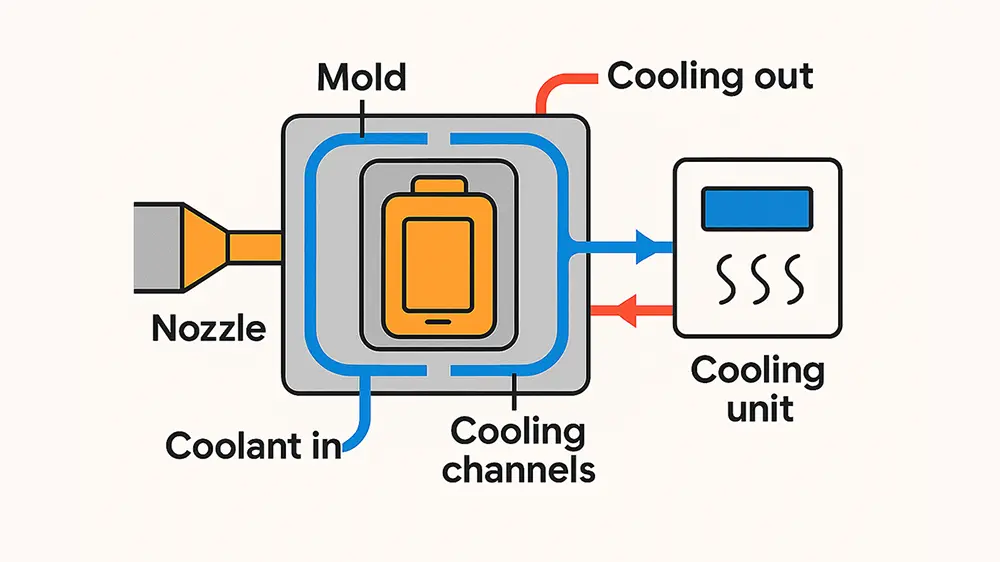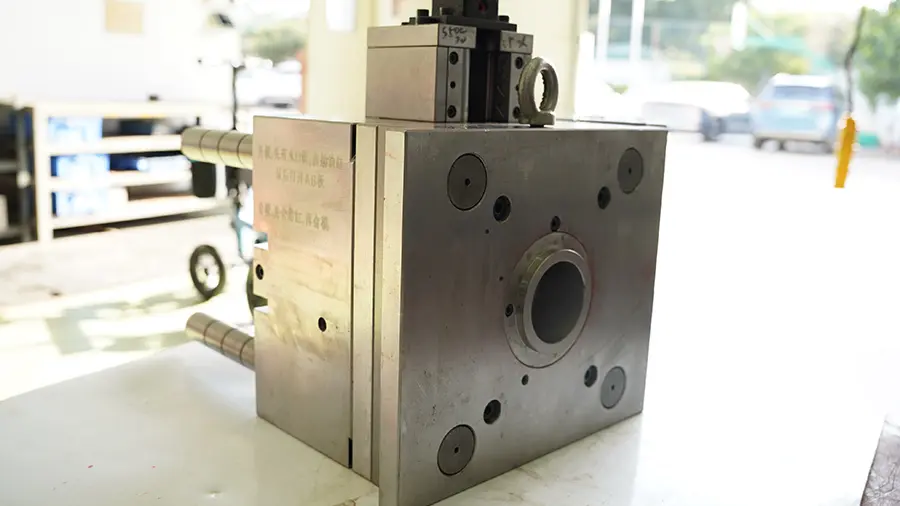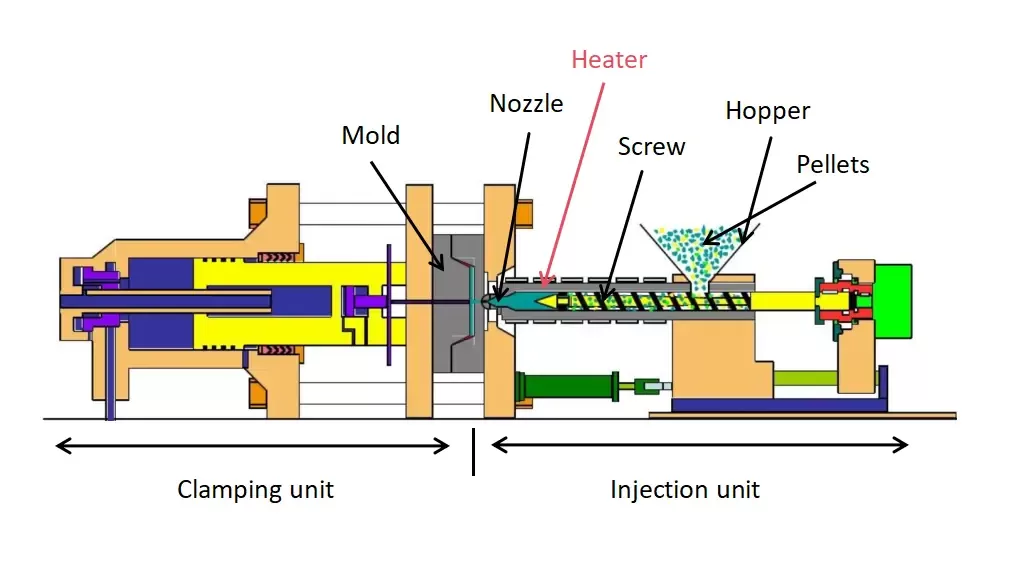Rapid tooling is a method used in manufacturing. Rapid gives an edge to any production process by raising production efficiency and reducing costs.
It offers fast results from functions like material handling, machine tools, and many others. Rapid tooling services are becoming crucial in manufacturing. And cost-effectiveness and extended lead times.
There are various paths to rapid tooling in production. We at RJC specialize in rapid tooling. In this article, we have given detailed information about the rapid tooling prototypes and manufacturing process.
Also, we have explained rapid prototyping examples. And the difference between direct and indirect tooling processes.
What Is Rapid Tooling In Manufacturing
Rapid tooling in manufacturing refers to the use of rapid prototyping techniques including additive fabrication and computer-aided prototyping to speed up production.
Rapid is vital for low volume or low-cost production, where increased output is desirable. Rapid tooling will be applied to fabricating, casting, forming and in cutting, engraving, etching, and even making plastic parts.
Rapid tooling gives many benefits to a company or an organization. For one, it increases the product development rate.
And reduces waste of material, produces consistent products, eliminates long cycle times. Eliminates costly material changes, provides improved design and graphic quality, and increases employee productivity. All these advantages lead to improved sales, better customer relations.
Why Is Rapid Tooling Important
Rapid tooling in production is vital. This is the first thing you look for in a company as you develop your business plan.
Suppose your production process doesn’t have the tools and equipment to quickly and accurately do your job so you can’t possibly deliver your product on schedule.
Rapid tooling in production is also vital for reducing waste. We know that the most critical factor in waste is not getting your product to your customer on time. But in addition to this, it’s also a good business practice.
To know exactly how much you are using to produce a given product. By reducing waste, you can improve the efficiency of your operations, which means better productivity, more sales, and a better bottom line.
What Is Rapid Tooling And Rapid Prototyping
Rapid tooling and rapid prototyping have a profound effect on the design process. By utilizing these methods, designers can create small, cheap, stable, best functional prototypes by using a machine. Rapid tooling allows designers to rapidly prototype parts and components.
What is rapid prototyping? Rapid prototyping is designing and building prototypes with the help of cad software. Rapid helps you in the development of new products in the fastest time.
This process is essential for concept generation and testing of unique designs and products in the manufacturing industry.
Now that you know what “rapid tooling and rapid prototyping”, it would be best if you continue reading this article to learn how to use these tools effectively.
Rapid Tooling Examples And Their Advantages
Rapid tooling is used to quickly build or replace complex systems in high volume or low output businesses.
A rapid tooling system can be defined as a set of steps or methods designed to create a product such as a machine, boat, aircraft, robot in a short period.
There are various rapid tooling models that firms use in production. Find a few examples below
- Automated milling machines
- Machine tooling solutions
- Surface sanders
- Laser cutting equipment
- Drilling machines
- Plasma cutters
- CNC equipment
With rapid tooling, companies can produce a wide range of parts much more rapidly than manual assembly.
What Are The Types Of Rapid Tooling Used In Manufacturing
Rapid Tooling in manufacturing includes
- Ultrasonic scan systems
- Ultrasonic emission machining
- Metal casting and mold making
The most common types are used in high-volume injection mold making; however, they can also use them on low-volume handcrafted items, ultrasonic milling and EDM operations, and high-volume stamping applications.
Rapid Tooling Injection Molding Advantages
Rapid tooling, sometimes known as bridge die or rapid tooling die in manufacturing, are an inexpensive and speedy method to injection mold different plastic parts in small batches.
When an aluminum or stainless steel mold is created using a rapid tooling die, it can then be used again as a component of another molding operation to produce multiple identical parts.
The parts are rapidly building on the casting machines. The pieces are usually die-cast in three-d polyurethane molds.
How Rapid Tooling Manufacturing Can Help You Build Quality Products With Less Cost
Rapid tooling manufacturing (RMT), also called rapid tooling, usually involves rapid prototyping techniques, like additive fabrication, dye sublimation, or fast temperature spray technology, to boost production rates.
Rapid is necessary for low volume or low-quality production. The increased production speeds and accuracy result in a product more quickly and at a much lower cost than conventional designs.
There are many benefits to using these techniques; reducing cycle times, reducing waste, having access to high-quality parts, and using materials that are more readily available.
There are several tools for rapid tooling and rapid prototyping. One is the rapid tooling production molds, which can build high-quality but less expensive plastic parts.
This process saves time for the manufacturer because it reduces the need to fine-tune molds or even change them when they don’t work.
What Is Direct Tooling? Rapid Tooling In Manufacturing
In simple terms, it’s the process of designing and building products using cad, rapid prototyping, and direct manufacturing techniques to create a product from an idea to a working prototype.
The term ‘direct tooling’ refers to a cad software and machinery to design and build prototypes from sketches and designs supplied by customers.
Rapid tooling refers to the process of building a prototype and testing it before you put it into production. You can also use rapid tooling for complex manufacturing tasks.
Rapid Manufacturing Processes
The rapid manufacturing process refers to the production of metal prototypes at a higher than usual speed. Metal prototypes are used to test the design, fit, and finalize the component.
Rapid tooling in manufacturing has the potential to provide significant cost savings over conventional production processes. It consists of three key components – desktop components, automated machines, and vacuum casting or direct cast injection molding equipment.
Desktop components are typically hand-powered or computer-guided. They include ultrasonic welding, laser-guided pneumatic parts, ultrasonic damping, and dielectric breaks.
What Is Rapid Prototyping In Manufacturing
What is rapid prototyping in manufacturing? Rapid tooling (RTV), which consists of rapid prototyping methods, such as 3D printing, to rapidly accelerate industrial production processes, is extremely important for rapid product development and cost reduction in any size manufacturing operation.
You can use rapid tooling in manufacturing for everything from full-scale object production to feasibility testing new designs for new products.
Rapid prototyping in manufacturing can even help design or test components required for production to make sure that they will work as designed.
What Are the Different Types Of Rapid Prototyping
What are the different types of rapid prototyping? Various tools are used in the tooling process, which is known as contaminants.
These contaminants can include glassware, plastic, ceramic molds, foam, metal alloys, wood, and more. The tools that can use in the rapid prototyping process are known as the contaminants generators, as they help speed up the process and make the generation of the models quicker and more efficient.
Other tools that can use in the process are support services or support resources, which help increase efficiency.
What Is Indirect Tooling
In a nutshell, it is a non-intrusive way of producing the same result as that of a traditional CNC machine. The production method involves optimization of existing tools, which can be used to create different materials or parts in producing a single product.
It is often used in tandem with traditional machine tools. Tooling methods that allow for different production results without using a human are called in-line or indirect CNC or self-contained or additive manufacturing.
This process produces the same effect as a traditional machine without adding any additional devices or personnel.
The Difference Between Direct And Indirect Rapid Tooling Processes
There are many differences between direct and indirect rapid tooling. One of the main differences is the speed with which a product reaches production. In a direct rapid process, it will complete the entire production process from the first to the last stage in a single shot.
The rate of production depends heavily on the quality of the workers and the skills they have. If a company has many products that need assembling and they have always finished the assembly in a reasonable amount of time, then this is a good indicator of their quality control standards.
However, there can also be a difference between a company that produces good quality products and those that do not.
Those that are not are usually the difference between direct and indirect rapid tooling processes. For this reason, companies that are new in the industry often find themselves stuck in the middle because they lack the specialized tools and machinery necessary for production efficiency.
Final Thoughts
At RJC Rapid tooling in manufacturing entails designing and building a physical model from high-resolution computer drawings or digital designs.
It requires careful consideration of several factors, including cost-effectiveness, schedule flexibility, feasibility, and end-to-end customer satisfaction.
In this article, we have covered the general information about rapid tooling. Also, we have explained rapid prototyping, rapid manufacturing process and types of rapid tooling, and the benefits of rapid tooling.





